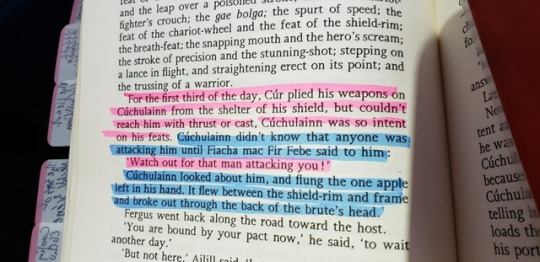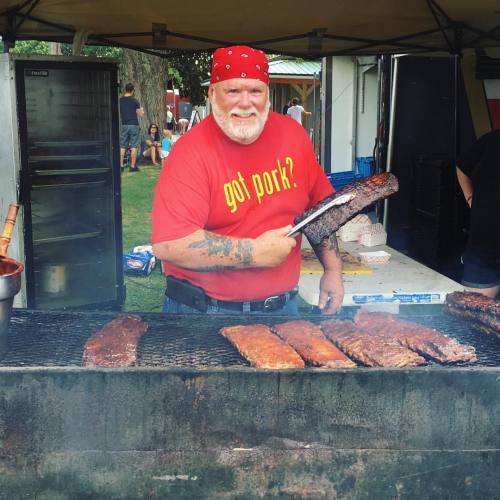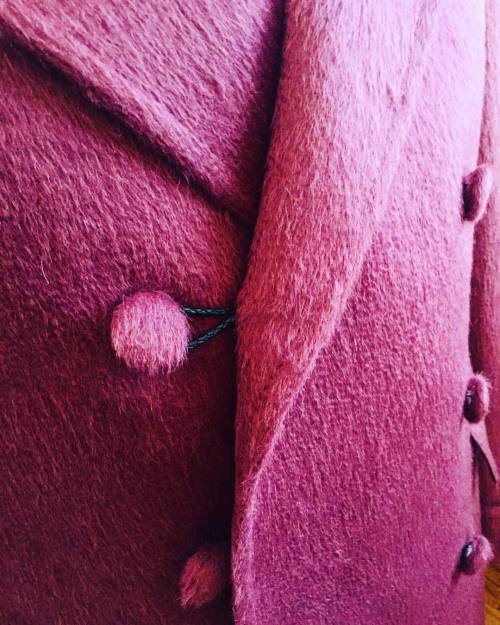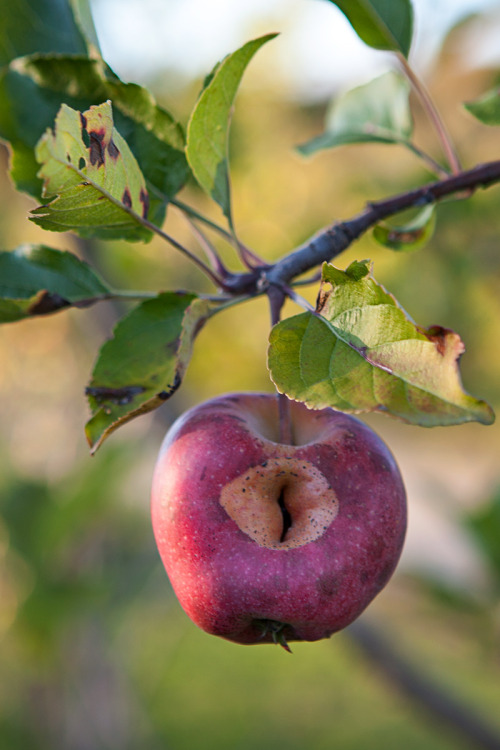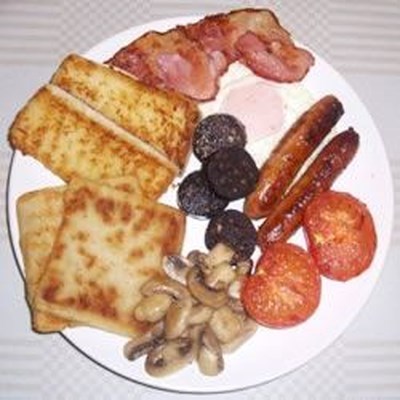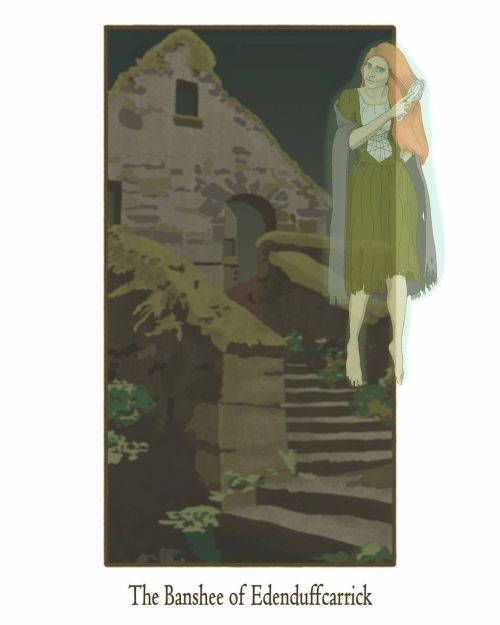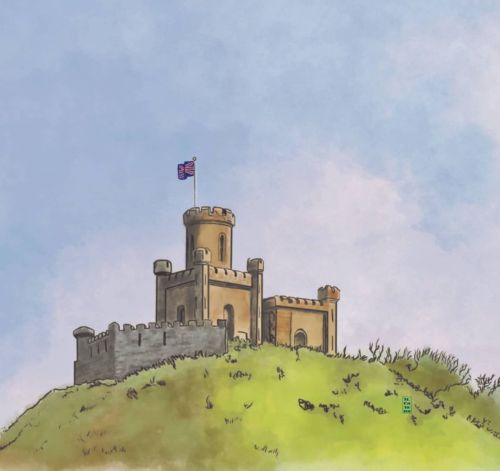#ulster
I see you have done this before.
#hudsonvalleyribfest #hudsonvalley #ulster #ribfest #bbq #stuffingoftheface #yum #weekentherapy #foodporn #foodiegram (at Hudson Valley Ribfest)
Post link
The Viking Age in Ireland
The Viking Age in Ireland
The exact reasons for Vikings venturing out from their homeland are uncertain; some have suggested it was due to overpopulation of their homeland, but the earliest Vikings were looking for riches, not land. Vikings also settled in Scotland and, like Ireland, started to settle with the local population. In Scotland these people became known as The Gallowglasses and would later arrive in Ireland as…

#OTD in 1972 – The Official IRA announced a ceasefire. This marked the end of the Official IRA’s military campaign.
#OTD in 1972 – The Official IRA announced a ceasefire. This marked the end of the Official IRA’s military campaign.
The official wing of the IRA in Northern Ireland announced a ceasefire, reserving the right of self-defence against attacks by the British Army and sectarian groups. However the Provisional IRA dismissed the truce as having “little effect” on the situation.
The Northern Ireland Secretary, William Whitelaw, welcomed the move and a spokesperson said it was “a step in the right direction”.
A…

#OTD in 1929 – Death of historian and nationalist, Alice Stopford Green, in Dublin.
#OTD in 1929 – Death of historian and nationalist, Alice Stopford Green, in Dublin.
Born Alice Sophia Amelia Stopford in Kells, Co Meath, she lived in London where she met the historian John Richard Green. They were married in Chester on 14 June 1877. He died in 1883. John Morley published her first historical work Henry II in 1888.
In the 1890s she became interested in Irish history and the nationalist movement as a result of her friendship with John Francis Taylor. She was…

The Leprechaun is a small humanoid Fairy found in Ireland. The Leprechaun is described as a small humanoid Fairy that in modern day is depicted usually wearing green with a top hat and smoking a pipe and most of the time they have an orange beard. The very first mention of a Leprechaun is found in the book Echtra Fergus Mac Léti which translates to Adventure of Fergus son of Léti where the King of Ulster Fergus Mac Léti wakes up on a beach where he sees three Leprechauns trying to drag him into the ocean; he then captures them and they offer him three wishes for their release. Leprechauns are also said to have a pot of gold at the end of the rainbow and if you get the gold they will offer you three wishes for its return however most people take the gold due to the fact that Leprechauns are know tricksters and like to cause mischief so your wishes may not end up as you expect them.
Post link
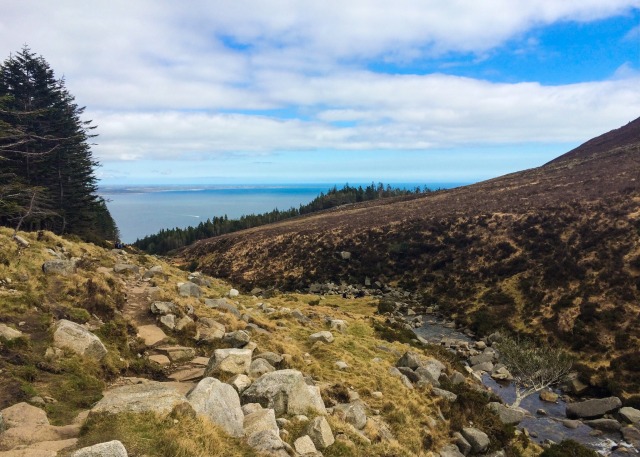




Slieve Donard, Mourne Mountains (Northern Ireland)
From our archives: Alpaca ulster with belt and leather laced buttons - Trunkshow @thearmouryhk Dec. 14/15
Post link
Oh it’s six miles from Bangor to Donaghadee by National Library of Ireland on The Commons
Via Flickr:
Ballymagee Street in Bangor, County Down on a fine day with an omnibus complete with destination plate to put our location on the map, so to speak! I do love posting photographs like this with so much going on, shops, awnings, clothing, traffic etc. The title comes from the song The Auld Orange Flute Oh, it’s six miles from Bangor to Donaghadee Now Bob, the deceiver, he took us all in He married a Papist called Bridget McGinn Turned Papish himself and forsook the old cause That gave us our freedom, religion and laws Photographer: Robert FrenchCollection:Lawrence Photograph Collection Date: Circa 1865 - 1914 NLI Ref: L_ROY_11218 You can also view this image, and many thousands of others, on the NLI’s catalogue at catalogue.nli.ie
The high and the mighty Rossmore - no more? by National Library of Ireland on The Commons
Via Flickr:
Rossmore Castle! A magnificent gothic pile with a vast array of rooms and windows is our photograph to end Monaghan Week. It has been a most interesting visit to the county with that one diversion to keep you all awake and makes you realise just how interesting the border counties are on both sides of the line! Photographer: UnknownCollection:Eason Photographic Collection Date: between 1900-1939 NLI Ref: EAS_3340 You can also view this image, and many thousands of others, on the NLI’s catalogue at catalogue.nli.ie
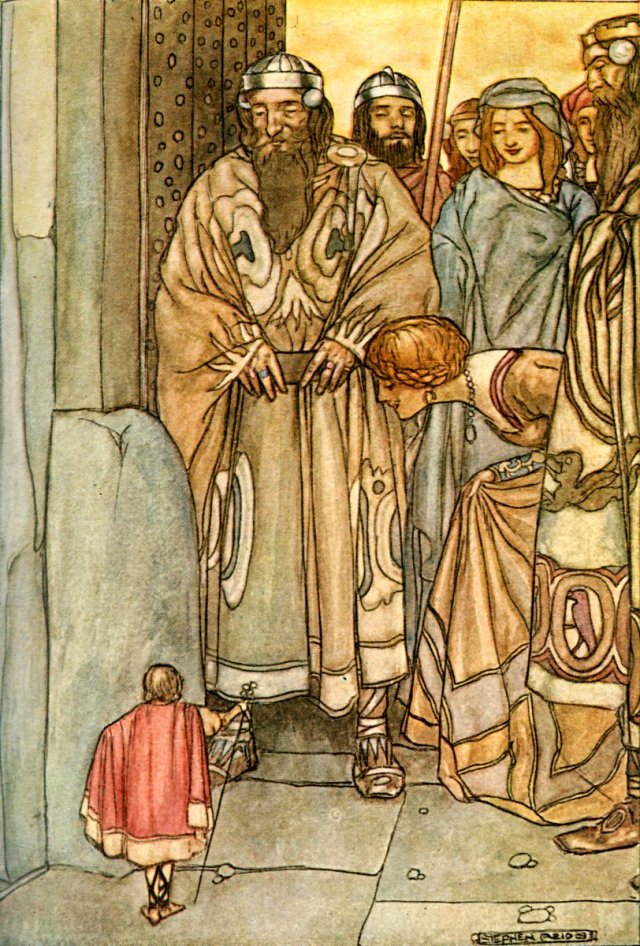
They all trooped out, lords and ladies, to view the wee man - by Stephen Reid 1910. The wee-man, Eisirt, in the presence of Fergus mac Léti.
“It happened on a day when Fergus son of Leda was King of Ulster, that Iubdan, King of the Leprecauns or Wee Folk, of the land of Faylinn, held a great banquet and assembly of the lords and princes of the Wee Folk. And all their captains and men of war came thither, to show their feats before the King, among whom was the strong man, namely Glowar, whose might was such that with his battle-axe he could hew down a thistle at one stroke. Thither also came the King’s heir-apparent, Tiny, son of Tot, and the Queen Bebo with her maidens; and there were also the King’s harpers and singing-men, and the chief poet of the court, who was called Eisirt.
All these sat down to the feast in due order and precedence, with Bebo on the King’s right hand and the poet on his left, and Glowar kept the door. Soon the wine began to flow from the vats of dark-red yew-wood, and the carvers carved busily at great haunches of roast hares and ribs of field-mice; and they all ate and drank, and loudly the hall rang with gay talk and laughter, and the drinking of toasts, and clashing of silver goblets.
At last when they had put away desire of eating and drinking, Iubdan rose up, having in his hand the royal goblet of gold inlaid with precious many-coloured jewels, and the heir-apparent rose at the other end of the table, and they drank prosperity and victory to Faylinn. Then Iubdan’s heart swelled with pride, and he asked of the company, "Come now, have any of you ever seen a king more glorious and powerful than I am?” “Never, in truth,” cried they all. “Have ye ever seen a stronger man than my giant, Glowar?” “Never, O King,” said they. “Or battle-steeds and men-at-arms better than mine?” “By our words,” they cried, “we never have.” “Truly,” went on Iubdan, “I deem that he who would assail our kingdom of Faylinn, and carry away captives and hostages from us, would have his work cut out for him, so fierce and mighty are our warriors; yea, any one of them hath the stuff of kingship in him.”
On hearing this, Eisirt, in whom the heady wine and ale had done their work, burst out laughing; and the King turned to him, saying, “Eisirt, what hath moved thee to this laughter?” “I know a province in Erinn,” replied Eisirt, “one man of whom would harry Faylinn in the teeth of all four battalions of the Wee Folk.” “Seize him,” cried the King to his attendants; “Eisirt shall pay dearly in chains and in prison for that scornful speech against our glory.”
Then Eisirt was put in bonds, and he repented him of his brag; but ere they dragged him away he said, “Grant me, O mighty King, but three days’ respite, that I may travel to Erinn to the court of Fergus mac Leda, and if I bring not back some clear token that I have uttered nought but the truth, then do with me as thou wilt.”
So Iubdan bade them release him, and he fared away to Erinn oversea.
After this, one day, as Fergus and his lords sat at the feast, the gatekeeper of the palace of Fergus in Emania heard outside a sound of ringing; he opened the gate, and there stood a wee man holding in his hand a rod of white bronze hung with little silver bells, by which poets are wont to procure silence for their recitations. Most noble and comely was the little man to look on, though the short grass of the lawn reached as high as to his knee. His hair was twisted in four-ply strands after the manner of poets and he wore a gold-embroidered tunic of silk and an ample scarlet cloak with a fringe of gold. On his feet he wore shoes of white bronze ornamented with gold, and a silken hood was on his head. The gatekeeper wondered at the sight of the wee man, and went to report the matter to King Fergus. “Is he less,” asked Fergus, “than my dwarf and poet Æda?” “Verily,” said the gatekeeper, “he could stand upon the palm of Æda’s hand and have room to spare.” Then with much laughter and wonder they all trooped out, lords and ladies, to the great gate to view the wee man and to speak with him. But Eisirt, when he saw them, waved them back in alarm, crying, “Avaunt, huge men; bring not your heavy breath so near me; but let yon man that is least among you approach me and bear me in”. So the dwarf Æda put Eisirt on his palm and bore him into the banqueting hall.
Then they set him on the table, and Eisirt declared his name and calling. The King ordered that meat and drink should be given him, but Eisirt said, “I will neither eat of your meat nor drink of ale.” “By our word,” said Fergus, “‘tis a haughty wight; he ought to be dropped into a goblet that he might at least drink all round him.” The cupbearer seized Eisirt and put him into a tankard of ale, and he swam on the surface of it. “Ye wise men of Ulster,” he cried, “there is much knowledge and wisdom ye might get from me, yet ye will let me be drowned!” “What, then?” cried they. Then Eisirt, beginning with the King, set out to tell every hidden sin that each man or woman had done, and ere he had gone far they with much laughter and chiding fetched him out of the ale-pot and dried him with fair satin napkins. “Now ye have confessed that I know somewhat to the purpose,” said Eisirt, “and I will even eat of your food, but do ye give heed to my words, and do ill no more.”
Fergus then said, “If thou art a poet, Eisirt, give us now a taste of thy delightful art.” “That will I,” said Eisirt, “and the poem that I shall recite to you shall be an ode in praise of my king, Iubdan the Great.” Then he recited this lay:—
“A monarch of might
Is Iubdan my king.
His brow is snow-white,
His hair black as night;
As a red copper bowl
When smitten will sing,
So ringeth the voice
Of Iubdan the king.
His eyen, they roll
Majestic and bland
On the lords of his land
Arrayed for the fight,
A spectacle grand!
Like a torrent they rush
With a waving of swords
And the bridles all ringing
And cheeks all aflush,
And the battle-steeds springing,
A beautiful, terrible, death-dealing band.
Like pines, straight and tall,
Where Iubdan is king,
Are the men one and all.
The maidens are fair—
Bright gold is their hair.
From silver we quaff
The dark, heady ale
That never shall fail;
We love and we laugh.
Gold frontlets we wear;
And aye through the air
Sweet music doth ring—
O Fergus, men say
That in all Inisfail
There is not a maiden so proud or so wise
But would give her two eyes
Thy kisses to win—
But I tell thee, that there
Thou canst never compare
With the haughty, magnificent King of Faylinn!”
-The High Deeds of Finn and Other Bardic Romances of Ancient Ireland by T.W. Rolleston
https://paganimagevault.blogspot.com/2022/03/they-all-trooped-out-lords-and-ladies.html

The Muirdris and Fergus mac Léti by unknown artist
“The next day Fergus put on the shoes of Iubdan and went forth to Loch Rury, and with him went the lords of Ulster. And when he reached the margin of the lake he drew his sword and went down into it, and soon the waters covered him.
After a while those that watched upon the bank saw a bubbling and a mighty commotion in the waters, now here, now there, and waves of bloody froth broke at their feet. At last, as they strained their eyes upon the tossing water, they saw Fergus rise to his middle from it, pale and bloody. In his right hand he waved aloft his sword, his left was twisted in the coarse hair of the monster’s head, and they saw that his countenance was fair and kingly as of old. "Ulstermen, I have conquered,” he cried; and as he did so he sank down again, dead with his dead foe, into their red grave in Loch Rury.
And the Ulster lords went back to Emania, sorrowful yet proud, for they knew that a seed of honour had been sown that day in their land from which should spring a breed of high-hearted fighting men for many a generation to come.
Of this was sung:
King Fergus, son of Léte
Went on the sandbank of Rudraige;
A horror which appeared to him — fierce was the conflict —
Was the cause of his disfigurement.“
-The Saga of Fergus mac Léti by D.A. Binchy
&
The High Deeds of Finn and Other Bardic Romances of Ancient Ireland by T.W. Rolleston
https://paganimagevault.blogspot.com/2022/03/the-muirdris-and-fergus-mac-leti-by.html

Fergus goes down into the lake by Stephen Reid 1910
“Fergus mac Léti (also mac Léte, mac Léide, mac Leda) was, according to Irish legend and traditional history, a king of Ulster. His place in the traditional chronology is not certain - according to some sources, he was a contemporary of the High King Conn of the Hundred Battles, in others of Lugaid Luaigne, Congal Cláiringnech, Dui Dallta Dedad and Fachtna Fáthach.
According to the Caithréim Conghail Cláiringhnigh (Martial Career of Congal Cláiringnech), while Lugaid Luaigne was High King of Ireland, Fergus ruled the southern half of Ulster while Congal Cláiringnech ruled the northern half. The Ulaid objected to having two kings, and the High King was asked to judge which of them should be sole ruler of the province. Lugaid chose Fergus, and gave him his daughter Findabair in marriage. Congal refused to accept this and declared war. After trying and failing to overthrow Fergus, he marched on Tara and defeated and beheaded Lugaid in battle. Installing himself as High King, he deposed Fergus as king of Ulster, putting his own brother Ross Ruad in his place. In the reign of Fachtna Fáthach, Ross was killed in the Battle of Lough Foyle, and Fergus was made king of Ulster again.
In the Saga of Fergus mac Léti, he encounters water-sprites called lúchorpáin or "little bodies”; this is thought to be the earliest known references to leprechauns. The creatures try to drag Fergus into the sea while he is asleep, but the cold water wakes him and he seizes them. In exchange for their freedom the lúchorpáin grant him three wishes, one of which is to gain the ability to breathe underwater. This ability will work anywhere but Loch Rudraige (Dundrum Bay) in Ulster. He attempts to swim there anyway, and encounters a sea-monster called Muirdris, and his face is permanently contorted in terror. This disfigurement would disqualify him from the kingship, but the Ulstermen do not want to depose him, so they ban mirrors from his presence so he will never learn of his deformity. Seven years later he whips a serving girl, who in anger reveals the truth to him. Fergus returns to Loch Rudraige in search of the sea-monster, and after a two-day battle that turns the sea red with blood, kills it, before dying of exhaustion.
His kingship of Ulster, his association with the sword Caladbolg and his death in water have led some to identify him as a double of the Ulster Cycle character Fergus mac Róich, although the two characters appear together in the Caithréim Conghail Cláiringhnigh as enemies.“
-taken from wikipedia
https://paganimagevault.blogspot.com/2022/03/fergus-goes-down-into-lake-by-stephen.html
In the North of Ireland, locals treat themselves to this enormous breakfast on the weekends. The fried breads make it unique. Soda bread and potato farls are cooked in reserved bacon fat making them golden and crispy. Served alongside Irish bacon, sausage, black pudding, tomato and egg - you won’t need to eat again for the rest of the day!
Post link
Say you stayed home
Alone with the flu
Find out from friends
That wasn’t true
Go out at night
With your headphones on again
And walk through
The Manhattan valleys of the dead
Didn’t want to be your ghost
Didn’t want to be anyone’s ghost…
~ The National
Staying with the Irish Faerie theme, this is my interpretation of the Banshee.
A banshee is a female spirit in Irish folklore who heralds the death of a family member, usually by wailing, shrieking, or keening. Her name is connected to the mythologically important tumuli or “mounds” that dot the Irish countryside, which are known as síde in Old Irish.
Drawn using Krita.
#Banshee #Irish #Folklore
#Faerie #Fairy #mythology #Celtic #celticfolklore #Ireland #Scotland #Ulster #illustrationartists #illustrateyourworld #ExploreNI #DiscoverNI #irishpassion #wanderireland #loves_ireland #hash_talent #krita #huion #fantasy #horror #gothic (at Donaghadee)
https://www.instagram.com/p/CPQ2qhHpOVf/?utm_medium=tumblr
Post link
Below the thunders of the upper deep,
Far, far beneath in the abysmal sea,
His ancient, dreamless, uninvaded sleep
The Kraken sleepeth: faintest sunlights flee
About his shadowy sides; above him swell
Huge sponges of millennial growth and height;
And far away into the sickly light,
From many a wondrous grot and secret cell
Unnumbered and enormous polypi
Winnow with giant arms the slumbering green.
There hath he lain for ages, and will lie
Battening upon huge sea worms in his sleep,
Until the latter fire shall heat the deep;
Then once by man and angels to be seen,
In roaring he shall rise and on the surface die.
~ Alfred Lord Tennyson
Another layer to my lighthouse painting depicting the legendary Kraken of Norse Mythology.
#Kraken #Donaghadee #Krita #Huion #fantasy #artistsoninstagram #illustrateyourworld #illustrationartists #digitalart #digitalpainting #DiscoverNI #ExploreNI #irishpassion #Ulster #Norse #Viking #mythology (at Donaghadee)
https://www.instagram.com/p/CNOAMV1JJnA/?igshid=snh5jhgjrfvd
Post link
And if she asks you why you can tell her that I told you
That I’m tired of Castles in the Air
I’ve got a dream I want the world to share an’ castle walls
Just leave me to despair
Hills of forest green where the mountains touch the sky
A dream come true, I’ll live there ‘til I die
I’m asking you, to say my last goodbye
The love we knew, ain’t worth another try…
~ Don McLean
The Moat, Donaghadee.
Built in 1818 to house dynamite being used to blast out a new seabed for the newly planned harbour, this miniature castle was built on the site of a Norman motte & bailey.
It has formed a part of the Donaghadee skyline ever since.
Drawn from a photo I had taken last summer and coloured using Krita.
#artistsoninstagram #illustrateyourworld #hash_talent #igart #share_sketches #Irish #Ulster #DiscoverNI #purenorthernireland #loves_ireland #ExploreNI #digitalart #krita #huion #illustrationartists (at Donaghadee)
https://www.instagram.com/p/CNKjF98Jo3z/?igshid=5g1n4b7wo9yw
Post link
This book is a gift.
